Date: 12/06/2019
Astrid Arriaza is a SCDTP-funded PhD student in the Department of Social Statistics & Demography at the University of Southampton. Her PhD focus on measuring spatial and non-spatial access to primary health care.
I am a happy PhD student and this journey did not occur suddenly, it took me a while. What makes me an unusually happy PhD student? I truly believe I am a happy PhD student because I am passionate about the research topic. First, I want to share with you the exciting research topic I am developing, and then I will share the story that pushed me to be a PhD student.
My research project is concerned with understanding equity in access to health care; here you can follow why I believe this is an interesting topic: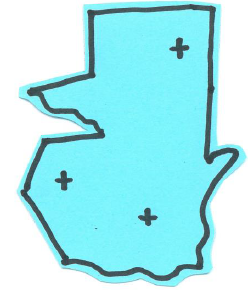
We recognize that health is an important aspect of the human wellbeing. Medical advancements, such as drugs, have prevented mortality and have increased our life expectancy. Public health care facilities are the most common places where health care is provided. The distribution of health care facilities promotes access to health services across geographies. Let us see different scenarios that exemplify the multiple dimensions of access to health across geographies:
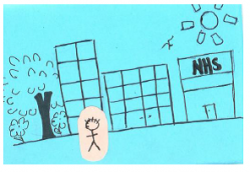 Here is someone who is fortunate; he lives in a place with high accessibility to health care. Whenever he feels sick, he walks 15 minutes from where he lives to reach a health facility. He can have access to health care without paying anything at the facility. In the health centre, there are nurses and doctors that can provide drugs to help him to feel better. Let us see different examples.
Here is someone who is fortunate; he lives in a place with high accessibility to health care. Whenever he feels sick, he walks 15 minutes from where he lives to reach a health facility. He can have access to health care without paying anything at the facility. In the health centre, there are nurses and doctors that can provide drugs to help him to feel better. Let us see different examples.
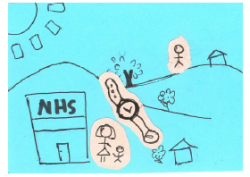
Here is a family that lives in a rural area; whenever a member of the family feels sick, they can visit the nearest public health facility. The nearest health facility is located an hour’s walk from their house.
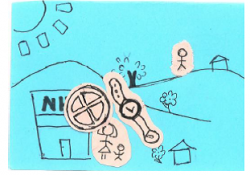 After walking for an hour, they manage to reach the public health facility. However, they could not solve their ill-health issue as there are not enough resources available in the facility. There is no doctor to make a diagnosis or any drugs. This is also happening in the public health facility of the closer town.
After walking for an hour, they manage to reach the public health facility. However, they could not solve their ill-health issue as there are not enough resources available in the facility. There is no doctor to make a diagnosis or any drugs. This is also happening in the public health facility of the closer town.
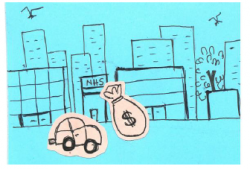
If the child had only flu, they could have solved the issue in the local pharmacy. This is what they had been doing in the last year, when he had a fever. Moreover, this family is in great need of health care for their kid, he has pneumonia.This kid requires health care from a physician, which is not available. The kid might have a chance of recovering, if his family has enough resources to travel further to find health care.
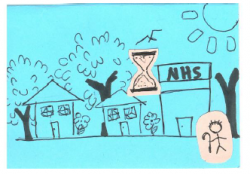 Here is an elder person who gets sick easily. He might need to visit the doctor more often than when he was young. He lives 30 minutes from the health centre; not that far, but he is old and has trouble walking.
Here is an elder person who gets sick easily. He might need to visit the doctor more often than when he was young. He lives 30 minutes from the health centre; not that far, but he is old and has trouble walking.
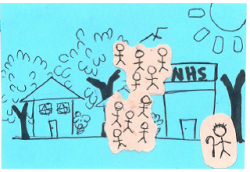
Although it was a challenge for him to reach the health facility, he arrived. Now, he faces another barrier: the nearest facility is quite popular among the citizens of the area so there are not enough resources available to provide health care to everyone. There is only one doctor and the health facility functions with half of the budget of other facilities with the same amount of patients.
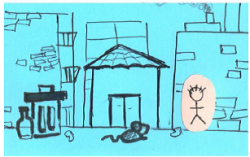 Some other individuals might be living in a high densely populated place, with limited sanitation services and high pollution. It might be also the case that they are poorly educated or have reduced job opportunities. The conditions around them increase the chance that they will get tuberculosis. Despite living in an urban area full of physicians and pharmacies, they cannot get treatment. They do not have enough money to seek health care.
Some other individuals might be living in a high densely populated place, with limited sanitation services and high pollution. It might be also the case that they are poorly educated or have reduced job opportunities. The conditions around them increase the chance that they will get tuberculosis. Despite living in an urban area full of physicians and pharmacies, they cannot get treatment. They do not have enough money to seek health care.
By now, you will have realised that I am advocating for improving access to public health for all. Equity in the distribution of health facilities and health care resources is the goal to be achieved. To reach this goal, the provision of public health services has to be strengthen by planning a better distribution of health care resources. For doing so, we first need to understand and measure population patterns of access to health, such as the given examples. This is the aim of my PhD.
I have decided to use my academic and professional experience to improve health care system in Guatemala. If there are not plenty of physicians and nurses in rural areas, people could at least have medicines. That was my idea when I decided to study pharmacy. As 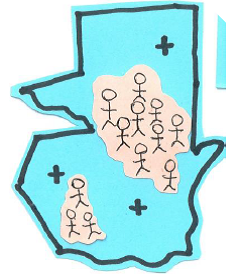 pharmacist, I volunteered in one of the only two public HIV clinics of the country. During that time, it was easy to see all of those barriers for access to health care. I realized that being a pharmacist was not enough – I understood that it was matter of public health.
pharmacist, I volunteered in one of the only two public HIV clinics of the country. During that time, it was easy to see all of those barriers for access to health care. I realized that being a pharmacist was not enough – I understood that it was matter of public health.
After studying public health, I realised that health services could not be planned without understanding population and that is where my career in demography started. This stubborn idea opened doors for me; now as a PhD student, I am able to study equity in access to health care in Guatemala, to plan for a better distribution of health care resources.